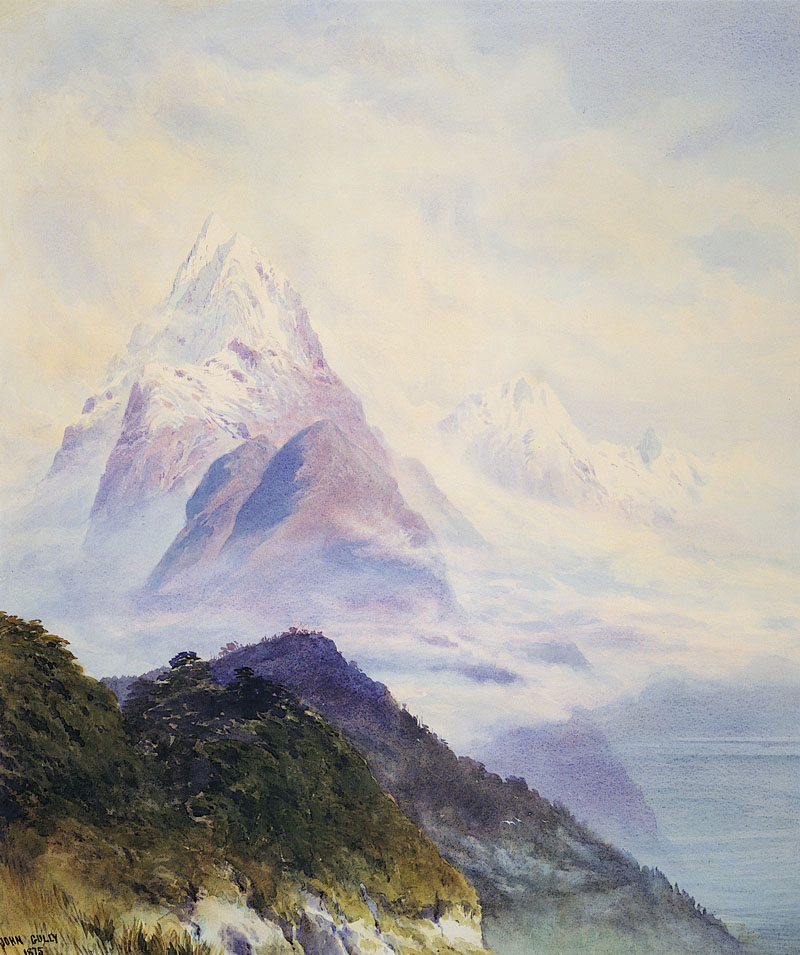John Gully was born in Bath, England. He was apprenticed to an iron foundry, graduated to its design department, and then spent a period as a clerk in a bank, during which time he took private lessons in painting. Having read Charles Hursthouse’s account of the settlement in Ngāmotu New Plymouth, he, his wife, and children emigrated there in 1852. He at first farmed at Omata, then worked as a clerk. By 1858, ‘J.G. of Omata’ was advertising to paint views of properties for sending overseas.
Gully took part as a volunteer in the Taranaki War but was invalided out of the army. In 1860, he moved to Whakatū Nelson, where he settled permanently, working as drawing master at Nelson College and later as a draughtsman in the Nelson Provincial Survey Office. A turning point came when Sir Julius von Haast and the politician and painter J. C. Richmond encouraged him to devote himself to painting. Richmond went on painting trips with Gully and used his considerable influence to help make his work known.
By 1870, Gully was probably New Zealand’s best known and popular painter. He exhibited at the Intercolonial Exhibitions in both Melbourne and Dunedin. In 1878, he devoted himself full-time to painting. He was a watercolourist, whose interest lay not in the recording of detail but rather in capturing those atmospheric effects sought after by the English and continental painters of the romantic sublime.
No topographical painter, Gully was more interested in a picturesque composition, and it was this that made his work popular with the public. He was untouched by either the Realism or Impressionism current in Europe at the time, but at times he expressed dissatisfaction at the necessity to churn out potboilers.
A more extensive biography is available on Te Ara The Encyclopedia of New Zealand.


